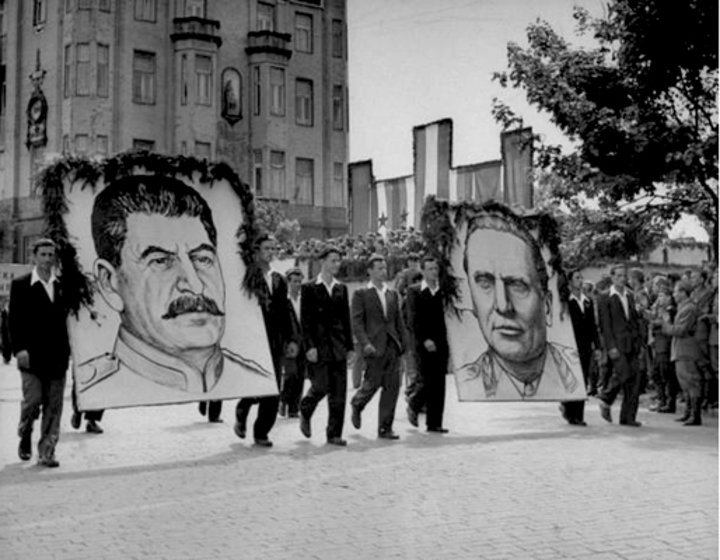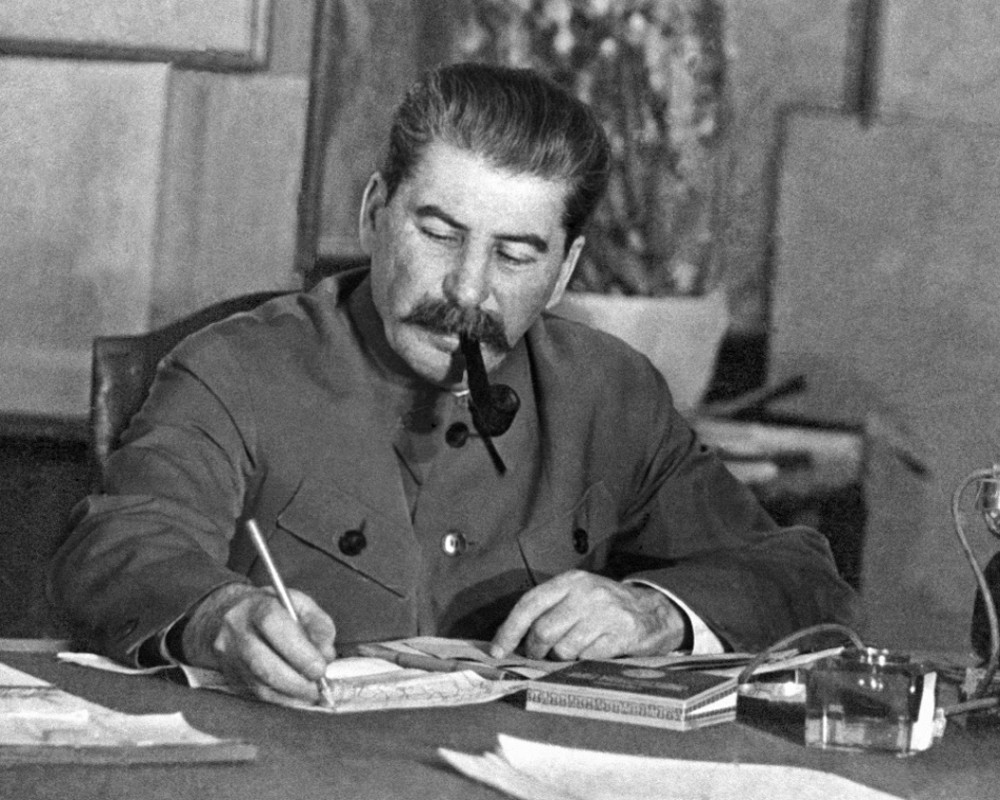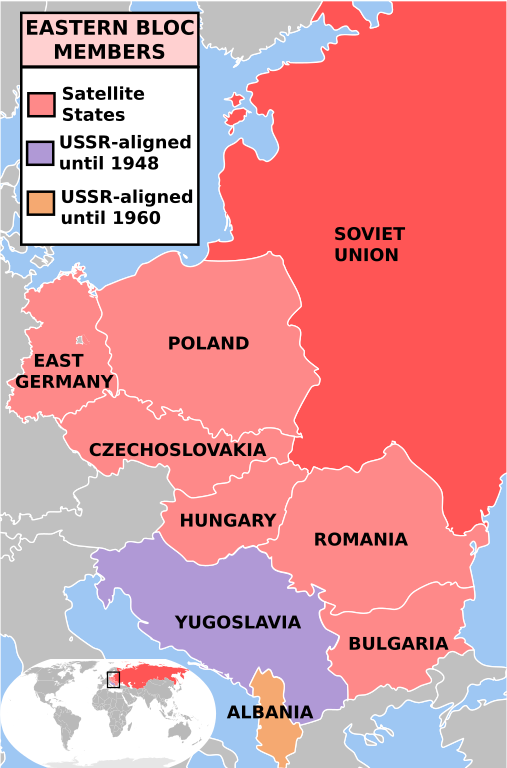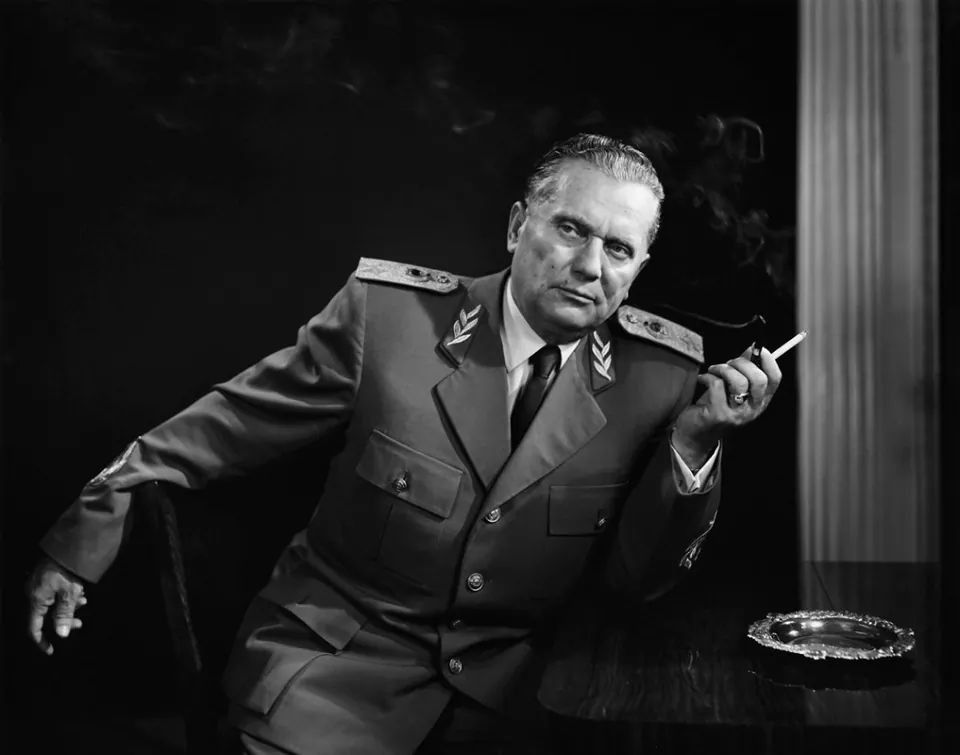

Table of Contents
During Joseph Stalin’s long rule there weren’t many who managed not only to say no but to openly defy him, especially in the communist realm. Among those few who managed to stand their ground against “the man of steel” were Josip Broz Tito and Yugoslavia. For most of the world, the abrupt end of the Yugoslav-Soviet friendship was a shocking turn of events. Yet the question arises - was the event as important as some have claimed?
Communist parties with a common enemy
Ties between the Communist Party of Yugoslavia and the Communist Party of the Soviet Union predated World War II, however fighting the common enemy brought them closer. If nothing else, the Soviets were primary benefactors of the Yugoslav partisans, while Yugoslav communists leaders cooperated tightly with Moscow. Yet while the war was still raging on, two parties clashed. On one hand, the Soviets considered a larger picture, considering their agreements with their western allies. On the other, the Yugoslavs were primarily focused on their own anti-fascist struggle, civil war, and revolution, all of which were packed into a single messy affair. These differences were mainly apparent in the treatment of the remnants of the monarchical Yugoslav government and its insurgent army. The Yugoslav communists wanted to topple it, while Joseph Stalin urged them to work together as he didn’t want to antagonize the British.

Portraits of Stalin (left) and Tito (right) paraded on the streets of Belgrade. masina.rs
Regardless of some friction, by the time the war ended, many considered socialist Yugoslavia to be the most loyal Soviet ally. Even the Soviets and the Yugoslavs commented similarly. A proof of this blooming alliance was the signing of a Yugoslav-Soviet friendship and mutual assistance treaty in April of 1945 when Tito met with Stalin in Moscow. Furthermore, Yugoslavia began building a carbon copy of the Soviet system, starting with its new constitution in 1946. It was a replica of the Soviet constitution of 1936. In return, the Soviets provided much-needed economic aid to war-torn Yugoslavia. Similar strong ties were exhibited in foreign affairs. Yugoslavia supported most of the Soviet worldviews, while Moscow presented Yugoslavia as a model to other European communist nations. It seemed that the Yugoslav-Soviet ties were iron tight.
First cracks in the Eastern bloc
While on the surface the Yugoslav-Soviet relations were strengthening, they also began showing first cracks. These came while the struggle against Nazi Germany was still ongoing. Tito often acted on the border of independence, though still referring to Moscow. Most troublesome for Stalin were the Yugoslav ambitions. Even during the war, Tito wanted to establish his dominance over the partisan movements in the Balkans. Furthermore, when the Yugoslavs learned of the 1944 Stalin-Churchill Percentage agreement, they stated that Yugoslavia wasn’t a bargaining chip. It was a clear message that the Yugoslav communists wouldn’t accept becoming a mere Soviet pawn.
Issues continued after the war. The Yugoslav foreign policy remained rather aggressive for Stalin’s taste. He was irritated by the fact that Josip Broz Tito pressed territorial claims against Italy, Hungary, and Austria. Furthermore, Yugoslavia sought to dominate over Albania, with the ultimate goal of unification. The Soviets weren’t completely against unification, at least publicly, but they wanted to keep it for a later date. Jospeh Stalin was still wary of western reactions. Similar reasoning was behind his orders for the Yugoslavs to stop supporting the communist insurgents in the later phases of the Greek Civil War (1943-1949).
Yugoslav-Bulgarian relations
Another stumbling block was the issue of Yugoslav-Bulgarian relations. Both sides toyed with the idea of a federal union between the two nations even during the war. However, Tito considered unification only if Bulgaria would become one of the Yugoslav constituent republics, while also ceding parts of its territory to the Yugoslav Macedonian republic. On the other hand, Joseph Stalin wanted two states to unite on equal footings, basically using Bulgarians as a counterweight to Josip Broz Tito’s ambitions. Nonetheless, international circumstances after 1945 put a stop to these ideas going any further.
All of these differences between the Soviets and the Yugoslavs might have remained under the radar were it not for the evolution of Stalin’s view of the eastern bloc. As the communist puppet regimes secured their rule in Eastern Europe, the Soviets sought to get a firmer grip over them. As such, the semi-independent Yugoslav actions rubbed them the wrong way, even when in theory their actions were according to global communist philosophy. An example of that was the Yugoslav-Bulgarian treaty of friendship and mutual assistance signed in August of 1947. It was nothing more than a cooperation agreement between two socialist states, yet it was done without consulting Moscow. It was another thorn in the Yugoslav-Soviet relations.
Yugoslav-Albanian relations
Further straining these relations were the Yugoslav-Albanian relations, which were continuously moving towards unification. From their friendship and cooperation agreement of 1946, Albania was being incorporated into the Yugoslav economic system. By 1947 there were ideas for a military merger, crowned with planned deployment of the Yugoslav army in Albania in early 1948. Such hastened road towards unification may have been a Yugoslav response to an increasing presence of Soviet advisors in Albania, which Tito saw as curbing his influence in Tirana.
Tito and Albanian leader Enver Hoxha tried to keep such agreements a secret, but the Soviets learned about them immediately, prompting a strong reaction in Moscow. Molotov, Soviet minister of foreign affairs, for the first time mentioned “serious differences” between Yugoslavia and the Soviet Union. The Soviets sent a stern warning to Belgrade that such actions are going against the treaty between them.
The idea of federal union of Yugoslavia, Bulgaria, and Albania
Tito immediately recognized his errors, stopping the troop redeployment and waiting for a green light from Moscow. Had that been all, the allies might have patched things up. However, at roughly the same time the Soviets learned from the Albanians that there were some talks about Yugoslavia, Albania, and Bulgaria joining forces if the situation in Greece necessitated. Furthermore, Bulgarian leader Georgi Dimitrov also spoke about creating a federal state from the eastern bloc, including Greece. From Stalin’s viewpoint, all that was caused by Tito’s stubborn refusal to align his actions with Soviet plans. To rein in his ally, he summoned both Yugoslav and Bulgarian representatives to Moscow, holding a joint meeting on February 10th 1948.

A photograph of Joseph Stalin at his desk, working. source
During these talks, Jospeh Stalin lectured both the Bulgarian and the Yugoslavs of the dangers of their actions in Greece, especially Yugoslav deployment in Albania. Both Balkan states were to stop helping the Greek communist to avoid any western action in the region. However, some historians claim that this motive was only secondary, while the primary concern for Stalin was the independent nature of Yugoslav and Bulgarian actions. Then he proceeded with condemning Dimitrov’s statements, but rather unexpectedly talked about creating a smaller federal union of Yugoslavia, Bulgaria, and Albania. Stalin ordered the immediate unification of Yugoslavia and Bulgaria as the first step towards it, whilst Albania was to join them on a later date. It was likely a move made to disrupt the Yugoslav leadership of more obedient Bulgarians.
Both the Bulgarians and the Yugoslav admitted their mistakes and signed a treaty drawn up by Moscow, committing them to consult with the Soviet Union on all relevant international matters. A few days later, the Yugoslav Politburo met to discuss their next move. Unlike the Bulgarians, the Yugoslav party leaders decided to disobey Stalin. Yugoslavia won’t proceed with unification. By late February, Tito was also once again promising military aid to Greek communists. For the first time, Tito openly defied Stalin’s will.
Yugoslav-Soviet breaking point
The brewing discord beneath the surface began to overflow in early march, as the Soviets retracted their advisors from Yugoslavia. Then on March 27th, Joseph Stalin and Molotov sent a letter to the Yugoslav communist party leaders. In short, through it the Soviets denounced Tito and his closest communist party leaders as dubious Marxists who strayed from the proper socialism, encouraging the rest of the healthy communists to overthrow them. In early April, Tito refused to back down, rejecting Soviet accusations. Additionally he “reminded” Stalin of Yugoslav communist party achievements and previous loyalty, adding that the unique Yugoslav experience led the party towards building socialism in a somewhat different form. Thus, the confrontation was framed as an ideological clash.

A map showing members of Cominform (Eastern bloc), including Yugoslavia before its denunciation.
Before responding to what amounted to an open challenge, Stalin informed other communist parties of the developing clash between the Yugoslav and the Soviet communists. Then in early May, the Soviets sent the second letter, deploring Yugoslav achievements claiming they were dependent upon the Soviets. Finally, Stalin asked that the matter be brought up before the Cominform, a central organization of Marxist-Leninist parties established by the Soviet Union in late 1947. The Yugoslavs rejected such arbitration as clearly influenced by the Soviets. Regardless, an invitation was sent to Belgrade, once again rejected by the Yugoslav communists. Then Stalin sent a third letter informing the Yugoslavs that abstention and lack of self-defense in front of the Cominform would be interpreted as a tacit admission of guilt.
The Cominform meeting began on June 21st without the Yugoslav delegation. A week later it produced a public resolution on the Yugoslav communists, accusing its leadership of faulty ideology and policies, straying from the proper Leninist theory into nationalism. Thus, the Yugoslav communists party was removed from the international communist family.
The fallout from the Yugoslav-Soviet split
For almost the entire world, the denunciation of Yugoslavia came as a shock, as it was still seen as the Soviet closest ally. Rather quickly the US began probing about the split, slowly forming its policy of giving tepid support to Yugoslavia as a soft underbelly of the communist bloc. If properly exploited, it could serve as a disruptor of unity and a window into the commercialism of the west. For most Cominform members initial surprise was shrouded with the belief that the Yugoslav communists would yield, ousting Tito and its associates and returning to “proper socialist ways”. However, it seems Stalin wasn’t counting on the quick success of exerted pressure.
He was aware that Tito was alongside Hoxha the only communist leader who personally led the liberation struggle, enjoying wide support and a strong party base. Despite leaving room for the “penance” of KPJ in the Cominform resolution, Stalin counted that it would take time for Tito to lose power. Though it seems he miscalculated Yugoslav diplomatic skill and willingness of the west to keep Tito afloat during that crisis. Another important point was that Tito was backed against the wall. He knew that his submission would eventually cost him his life.

A later photograph of Tito, posing with a cigar in his military uniform.
The Yugoslav-Soviet split was no less of a bombshell in Yugoslavia. Up until that point Stalin was almost as celebrated as Tito, and even after the initial break the Yugoslav communists vowed loyalty to him. Simultaneously, Tito enacted a purge of any pro-Soviet party members in what became known as the Informbiro period. From that chaos, Yugoslavia slowly began to transform its socialism away from the Soviet model, while isolation sowed the seeds of its later non-alignment policy.
Tito-Stalin split: Major event or footnote of history?
When judging the Yugoslav-Soviet split, its importance is hard to measure. For socialist Yugoslavia it was a defining moment, directing the evolution of both its internal and foreign policies. It allowed it to be pretty much the only nation on both sides of the iron curtain. For the Soviets, it was an example for the rest of the eastern bloc - Moscow was to dominate and the rest were to listen. Many point to it as a failure in Stalin’s judgment, as Tito outlasted most of the Soviet leaders, yet he achieved his goal. His grip over the communist realm was tightened, to which anti-Titoist purges in other countries only aided. Furthermore, Yugoslavia lost all of its influence over Albania and Bulgaria, while it also stopped supporting the Greeks insurgents concerned with its own safety. Finally, it gave the capitalist bloc a new approach against the communist, one that tried to tempt them away from Soviet oppression, something Moscow never allowed again.
It is also important to note that the Tito-Stalin split also highlighted the true nature of the Cold War. Despite being framed as an ideological confrontation, it was nothing more than a power struggle. Likewise, the western support of Yugoslavia in years after the break also hints at such conclusions. Thus, though the Yugoslav-Soviet split may not have been a world-defining event, it had major consequences that influenced the future development of the Cold War and international relations.
